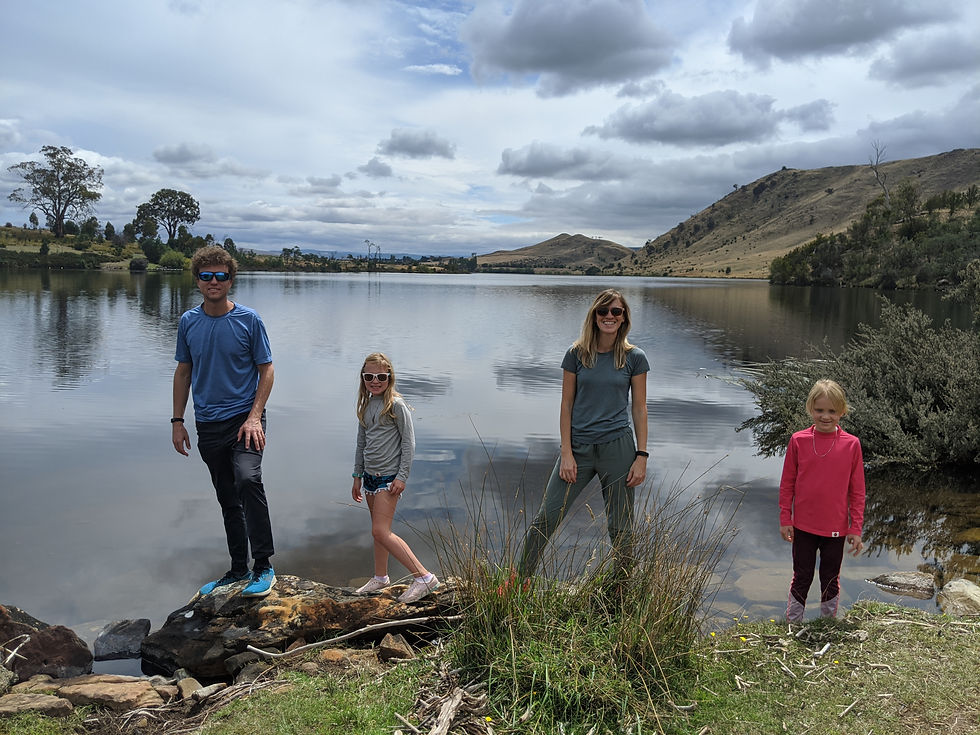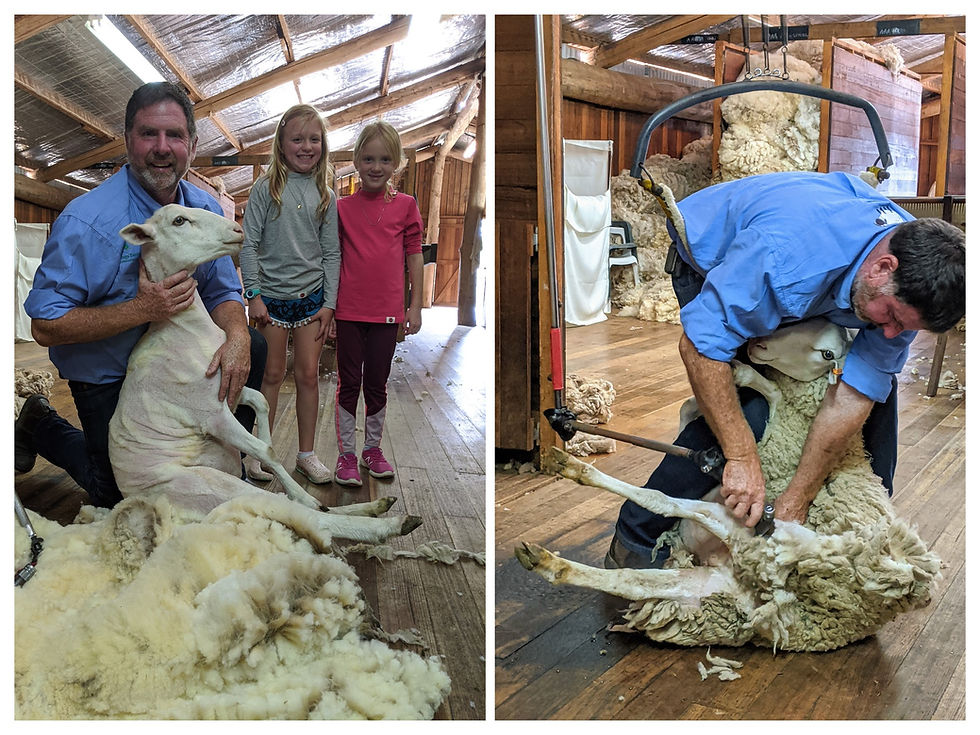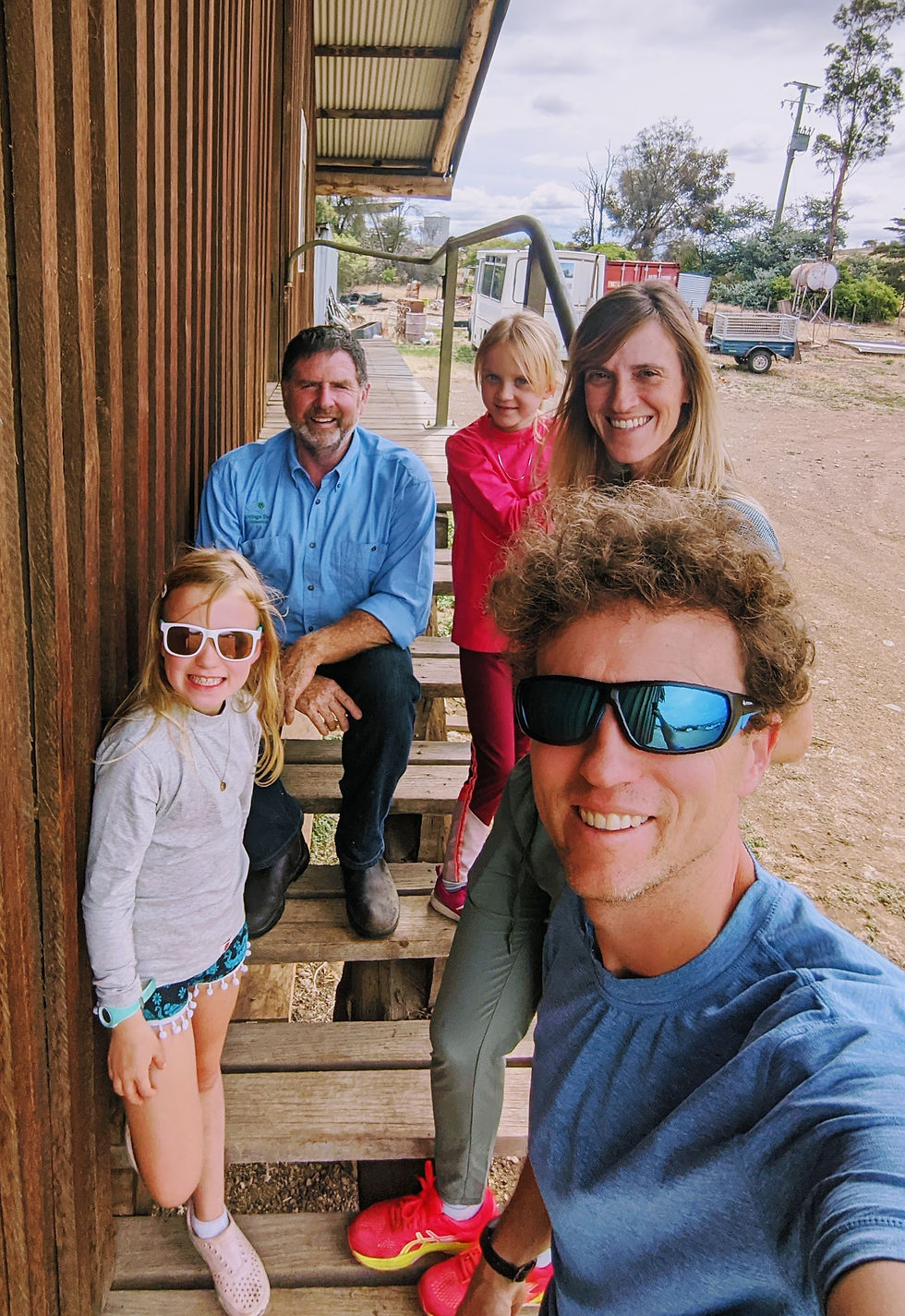Curringa Farm Tour
- doug
- Feb 11, 2020
- 3 min read
Mid morning we headed from our cottage to reception 3km away for a morning school session. How we got there, was anything buy normal.
Sheep Beware
Paige and Sadie got to drive (well steer) a car. What better place than a 750 acre sheep farm for the first time behind the wheel? More on their driving escapades here.


School & Scones
After some hot dogging on the road, we made our way to the main reception area for school (there's no WiFi in our room). During school time, Jane the owner, brought us over some complementary tea and scones.

Farm Tour
After school and scones, it was time for our farm tour. First a video mash up of the the tour..
With a few minutes to wait, we took the obligatory farm tour photo on the old tractors and said high to the roaming llamas. Fortunately from this point forward it wasn't like any other farm tour we'd be on, as we really got to see under the covers of a true working and functioning farm.

Ocean of Sheep
Sophie, our guide, took us outside with a few other folks and introduced us to their sheep dogs. She said a few words and before we knew it, a herd of sheep was headed our way. It was like an ocean of merino wool sweaters headed right for us!

Onion Seeds
We broke off and the rest of the tour we were flying solo, quite a special experience with Sophie and later with Farmer Jim (see below). Our first stop was a beautiful field of onions. They don't sell onions at Curringa; but rather, they sell the onion seeds to other farmers around the world. Basically they are brown onions that are allowed to grow the full flowering plant which produces the seeds. Interestingly, once an onion plant grows out like this, there is no flavor left in the mother onion; it's given all its nutrition to the plant and seedlings.




Poppy Field
Our next stop was just a fly by of a not so beautiful field that looked died out. We came to learn it was opium, which they harvest and sell to global pharmaceutical companies. Their field was going to be harvested later that week. They had already passed the beautiful flowering period.
Rams
You can't have 3,000+ sheep on your farm without rams! We were introduced to the lot of them, as they're kept away from the female sheep unless the time is appropriate. When we entered the gate to their area, they came running over, hoping for a treat from Sophie.


Interestingly, two of the rams stayed to the side. Sophie explained they were new to the farm, having just arrived that week and were not yet comfortable/didn't understand there was a snack when they got visitors.
After the rams, we drove around a bit to various parts of the farm, getting out at some scenic spots.

Sheep Sheering
We said goodbye to Sophie and were greeted by Farmer Tim, who's been running the farm for decades with his wife Jane. He grabbed one of the sheep and got to sheering!



He explained to us the hierarchy of sheep when it comes to wool quality. He said there's merino wool, standard wool and 'rug wool'.


The sheep at Curringa fall into the standard wool category, but they also end up on people's plates as well. It was interesting to get a unit economics explanation of exactly how a farmer thinks of the investment vs ROI on a per sheep basis.

The Curringa farm tour was an incredible and memorable experience for us all!
I especially enjoyed this post! I am a lifelong knitter and admit to being a yarn snob. I enjoy the feel and vibrancy of merino wool. Now I see and understand the source. When I travel I seek out yarn shops and purchase a skein or two. Then, as I knit, I remember the country where I purchased it. Luckily, yarn is light weight. Doug, Aunt Helen taught me to knit at age four. I also remember many a sweater made by your great grandmother Bohaboy. Thank you for this post! Heidi says "Arf! to S&P.